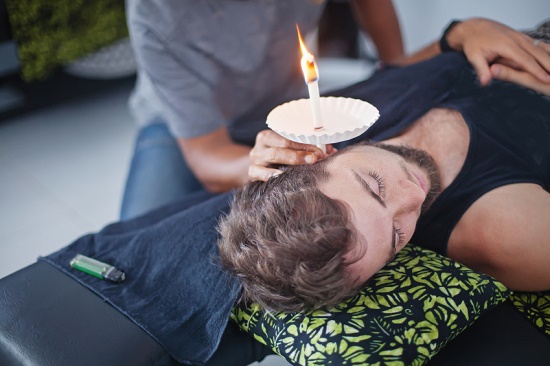
Our ears may possibly be our most mistreated body part. We pierce them, subject them to deafening noise, stuff cotton swabs inside them, and burn them with ear candling. In spite of providing us with one of our most essential senses, we never give our ears, or our hearing, much appreciation or consideration.
That is, right until there are problems. Then, we understand just how important healthy hearing really is—and how we ought to have learned proper ear care sooner. The trick is to realize this before the damage is done.
If you want to avoid issues and protect your hearing, avoid these 4 unsafe practices.
1. Ear Candling
Ear candling is a technique of eliminating earwax, and additionally, as one researcher put it, “the triumph of ignorance over science.”
Here’s how ear candling is done. One end of a narrow tube made of cotton and beeswax is placed into the ear. The opposite end is set on fire, which supposedly creates a vacuum of negative pressure that draws earwax up into the tube.
Except that it doesn’t, for two reasons.
First, the ear candle doesn’t create negative pressure. As stated by Lisa M.L. Dryer, MD, earwax is sticky, so even if negative pressure was created, the pressure required to suck up earwax would end up rupturing the eardrum.
Second, although the wax and ash resemble earwax, no earwax is actually found within the ear candle after the treatment. Clinical psychologist Philip Kaushall investigated this by burning some ear candles the customary way and burning other candles without placing them into the ear. The residue was the same for both groups.
Ear candling is also dangerous and is firmly opposed by both the FDA and the American Academy of Otolaryngology (physicians specializing in the ear, nose, and throat), if you need any other reasons not to do it.
2. Employing cotton swabs to clean your ears
We’ve written about this in other posts, but inserting any foreign object into your ear only presses the earwax against the eardrum, generating an impaction and potentially a ruptured eardrum and hearing loss.
Your earwax consists of beneficial antibacterial and lubricating properties, and is naturally expelled by the normal movements of the jaw (from talking and chewing). All that’s required from you is normal showering, or, if you do have issues with excessive earwax, a professional cleaning from your hearing consultant.
But don’t take our word for it: just take a look at the back of the package of any box of cotton swabs. You’ll notice a warning from the manufacturers themselves advising you to not enter the ear canal with their product.
3. Listening to extremely loud music
Our ears are simply not equipped to manage the loud sounds we’ve learned how to generate. In fact, any sound louder than 85 decibels has the potential to initiate irreversible hearing loss.
How loud is 85 decibels?
An average conversation registers at about 60, while a rock performance registers at over 100. But here’s the thing about the decibel scale: it’s logarithmic, not linear. Which means the jump from 60 to 100 decibels does not make the rock concert twice as loud, it makes it about 16 times as loud!
In the same way, many earbuds can achieve a similar output of 100 decibels or greater—all from inside of the ear canal. It’s no real surprise then that this can create irreparable injury.
If you prefer to preserve your hearing, ensure that you wear earplugs to concerts (and on the job if necessary) and keep your portable music player volume at about 60 percent or less of its max volume (with a 60 minute listening time limit). It may not be cool to wear earplugs to your next concert, but untimely hearing loss is not much cooler.
4. Overlooking the signs and symptoms of hearing loss
Last, we have the distressing fact that people have the tendency to wait nearly 10 years from the beginning of symptoms before seeking help for their hearing loss.
That indicates two things: 1) people unnecessarily experience the consequences of hearing loss for ten years, and 2) they make their hearing loss much more difficult to treat.
It’s true that hearing aids are not perfect, but it’s also true that with modern technology, hearing aids are extraordinarily effective. The degree of hearing you get back will be based on the degree of your hearing loss, and since hearing loss has a tendency to become worse over time, it’s best to get tested and treated the moment you notice any symptoms.